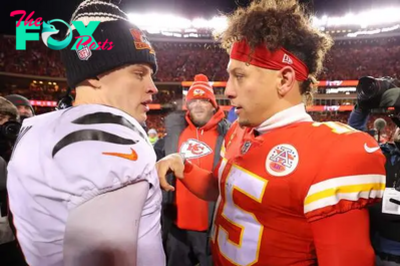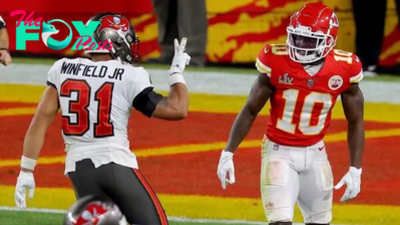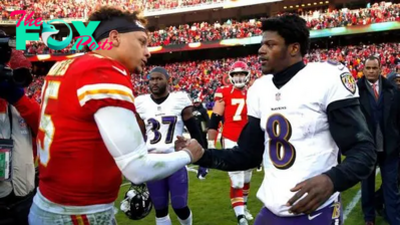NFL
Why do the San Francisco 49ers wear red? What is the origin of their logo?
As they prepare for Sunday’s big Game against the defending Super Bowl champion, Kansas City Chiefs, the 49ers must be truly excited at the prospect of avenging their 2020 Super Bowl loss. Yet, where did the Niners come from and what was the team’s evolution up to this point?
From the West to the Best: The 49ers Story
You might not know it, but the San Francisco 49ers were the first of the four major Sports teams based in San Francisco’s Bay Area and the first major Sports franchise to emerge from the West Coast of the United States. Created by an Italian American lumber transport Businessman named Anthony J. Morabito in 1946, the team has been part of the NFL since 1949 and belongs to the NFC West division. It stands today as the tenth oldest team in the league and as any Football fan can tell you, it is by far one of the most successful. Indeed, with five Conference Championships and five Super Bowl titles to their name, the 49ers are truly one of the NFL’s best.
Regarding the origin of the team, it’s worth noting that for the first three seasons of its existence, the Niners played in the All-American Football Conference, before a merger with the NFL took place in 1949 to bring us the football league that we love and watch today. As for the name of the team itself, the term ‘49ers’ is a reference and direct tribute to the famous gold rush of 1849. It was a time when countless prospectors made their way to California in search of wealth and to be honest, many of them found it as the state as a whole saw extensive economic growth.
How the lack of law inspired the 49ers’ first logo
The logo that we’re familiar with today has largely seen small cosmetic changes over the years, but what may surprise you is that the team’s first logo was very different. In the video below you will notice that it was in fact a custom-drawn illustration of a mustached gold miner - presumably from the 1849 gold rush - firing a pair of pistols. Proposed by Allen Sorrel, who co-owned the franchise alongside Morabito, the image with its seemingly intoxicated gold digger was meant to signify the lack of law during that era, something he felt was the perfect fit for the team. It would be safe to say that a great deal has changed since those times.
Fast forward to today and we’ve got a much simpler logo, though one that has maintained the essence of the team’s history. For starters, the presence of a light gold band around the edge of the emblem is as you can imagine a nod to the precious metal. The dark red is in recognition of the clothing worn by prospectors in those early times and of course the bold ‘SF’ which stands for the city from which the team hails. Interestingly, the team was originally registered as the “San Francisco Forty-Niners” but today as we all know, it’s simply known as the “49ers.”
The 49ers simplified things
In 1968, the franchise took the bold step of completely revamping the logo. Gone was the gun-toting prospector and in his place was a simple print-style image with the letters ‘SF’ backed by a dark red oval that was meant to represent a Football. It was from that image that we began to see a gradual though not dramatic evolution into the logo we know today. There were a number of temporary departures that were made during the years in honor of each time the team added a decade to its existence. The first of those was in 1986 when the franchise celebrated its 40th anniversary. The image featured a bright red ‘40′ encircled by a golden banner that displayed the team’s registered name, along with the timeline of its existence and a black representation of the famous Golden Gate Bridge. Since that time the team has made minor tweaks to its image but things have remained largely the same, much like its success on the field. Indeed, that’s why the 49ers will be taking on the Kansas City Chiefs in Super Bowl LVIII this Sunday, February 11th at Allegiant Stadium in Las Vegas, Nevada. Kick off is set for 6:30 p.m. ET. Don’t miss it.
-

 NFL2d ago
NFL2d agoTrevor Lawrence’s Wife Marissa Shows Off Wild Concert Outfit
-
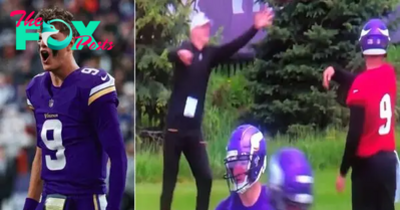
 NFL2d ago
NFL2d agoVikings Practice Video Leaks Showing JJ McCarthy’s Awful Throws
-

 NFL5d ago
NFL5d agoTom Brady Forced To Apologize To Gisele Bundchen Over Netflix Roast
-

 NFL6d ago
NFL6d agoSteelers Fans React To Ciara’s Wild Breastfeeding Photo
-

 NFL1w ago
NFL1w agoChiefs’ Rashee Rice under investigation for nightclub assault
-
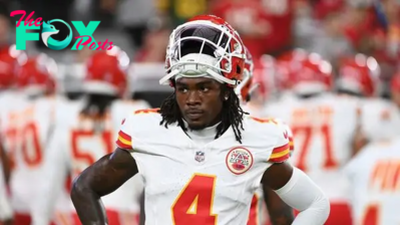
 NFL1w ago
NFL1w agoDid Kansas City Chiefs’ wide receiver Rashee Rice hit a photographer?
-
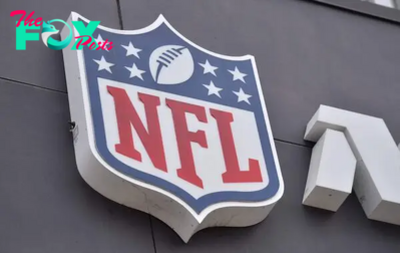
 NFL1w ago
NFL1w agoThe ‘clue’ on the Pittsburgh Steelers website about the NFL schedule: when will it be released?
-

 NFL1w ago
NFL1w agoWATCH: Cowboys’ Micah Parsons takes on sumo wrestler in Tokyo
